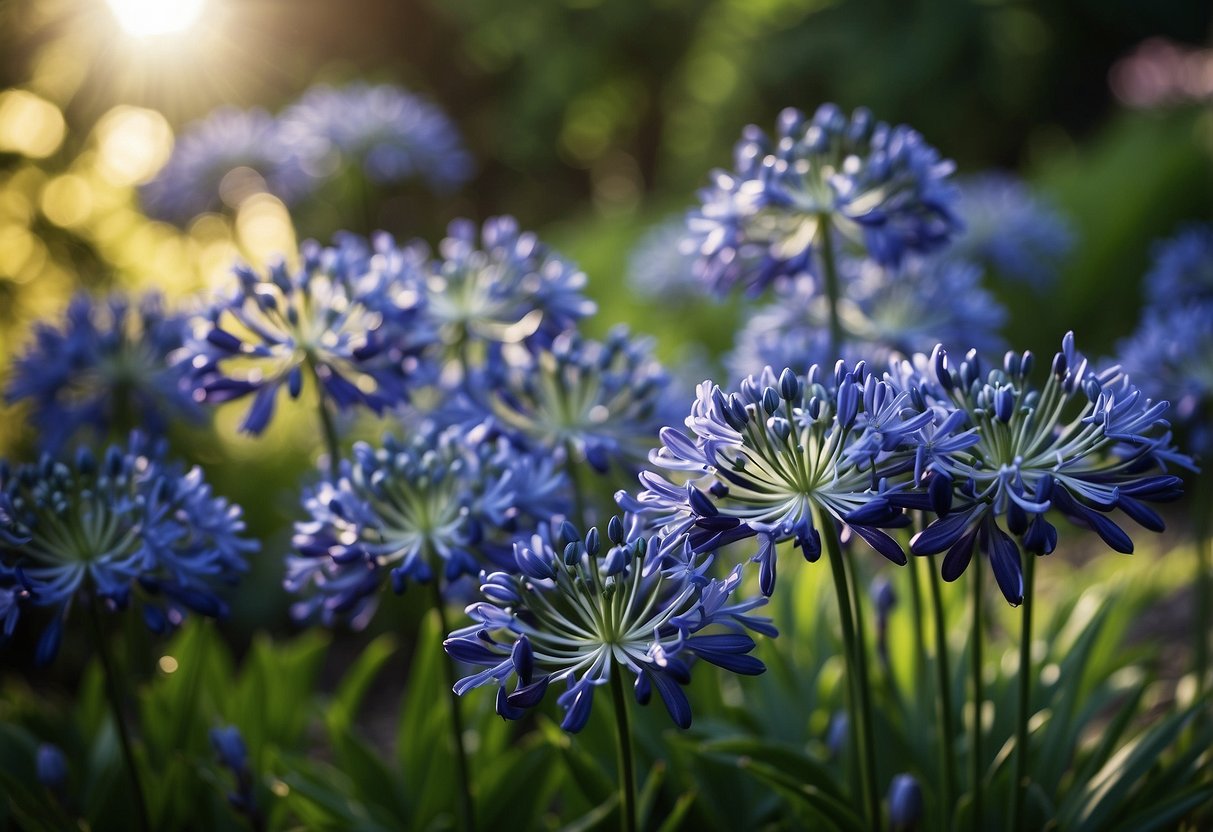Agapanthus Gardens: Easy Tips to Grow and Maintain Stunning Blooms


Agapanthus Gardens: Clearing Up the Confusion, One Myth at a Time
I still remember the mess I made with my first Agapanthus bed—soil too soggy, plants jammed shoulder to shoulder like commuters on a rainy Monday. The blue blooms I’d imagined? A grand total of three… and one was chewed off by a passing snail. Why do so many of us struggle at first? Because “simple” plants have their share of myths and sneaky pitfalls.
Let’s clear things up together—with the honest truth behind each misconception, some stories from my own trials (and a neighbor’s unexpected tip into the duck pond), plus straightforward steps for success. No need to pretend this is easy all the time—it’s not! But it is absolutely worth it.
Myth #1: “Agapanthus Will Grow Anywhere—Just Pop Them In”
Myth_to_truth:
It sounds so tempting! But here’s what happened to me: I planted five beautiful ‘Blue Storm’ agapanthus along a fence in what looked like sunny, healthy garden soil. By autumn, I had droopy leaves and barely any flower spikes.
What I learned:
Agapanthus must have well-drained soil. If, after rain, your site holds water more than an hour later—or if mud squelches under your boot—they’re sending out distress signals. (Believe me, yellowed leaves are their equivalent of waving a white flag.)
-
Try this check: After watering, dig six inches down with a trowel. If you pull up thick clay or sticky clumps, add at least 20% coarse sand or fine gravel mixed with rich compost. Or use a raised bed. Agapanthus aren’t drama queens—but they hate wet feet.
-
Spacing tip: Each plant needs 12–18 inches between neighbors—not just for airflow but to let those roots stretch out like a cat in the sun.
Is it ever perfect? Not for me! My compost mix is always different by accident; one year I used too much leaf mold and almost drowned them again—lesson learned.

This brings us to Myth #2: “Water Daily—More Water Means More Flowers!”
Misconception_clarity:
Is your instinct like mine was—hovering anxiously over each plant with the hose? My friend Martha did that in her courtyard; result: limp leaves and zero blooms until she skipped town for two weeks—the best thing that ever happened to her agapanthus!
The reality:
- Water deeply once (maybe twice) per week during spring to early fall.
- Allow the top inch of soil to dry before repeating.
- Back off seriously when plants go dormant in winter; otherwise rot creeps in quietly.
Picture their roots stretching down for a slow drink rather than staying shallow and needy—it builds sturdy plants without stress. Don’t panic if you forget once; mine have survived my vacation neglect more than once!
Myth #3: “Any Variety Will Survive Your Local Climate.”
My uncle swore all agapanthus could tough out British winters if tucked under old blankets… We lost most that year, except for ‘Arctic Star’ (still going strong).
The truth:
- Always check what works in your USDA zone (or regional equivalent). Hardy strains like ‘Queen Mum,’ ‘Arctic Star,’ or ‘Peter Pan’ survive light frost and bounce back with gusto.
- Tender types need protection—a thick mulch layer, or pot them up and bring indoors when hard frost threatens.
Not sure which you’ve got? Look for hints on nursery tags—or take photos and ask local gardeners (don’t be shy; even garden center staff sometimes guess wrong!).

Myth #4: “Agapanthus Take Care of Themselves Forever.”
Just because they look robust doesn’t mean they thrive on neglect—I spent four years blissfully ignoring one patch until they stopped flowering altogether.
What keeps them happy (and blooming)?
- Snip off spent flower stems as soon as petals flop. It channels energy into next year’s flowers instead of seed.
- Every 3–4 years, dig up crowded clumps in early spring or autumn; pry apart bigger clusters (I use an old bread knife) and replant spaced out again.
- Add an inch of fresh compost every spring—a little snack goes a long way!
Missed a season? No worries—just catch up next year. Plants forgive more than perfectionists believe.
Quick Troubleshooting
It took me forever to figure these out—here’s your cheat sheet:
| Problem | Usual Cause | Quick Fix |
|---|---|---|
| Yellow Leaves | Overwatering or poor drainage | Improve soil, ease up on water |
| Lots of Leaves/No Flowers | Not enough sun; crowded planting | Move to sunnier spot; thin out |
| Nibbled Shoots | Slugs/Snails | Collect at dawn; try wildlife-friendly pellets |
Extra tip: I once found ants farming aphids on flower buds—not common, but spray gently with soapy water if it happens!
Real Life Reminders
Gardening isn’t about instant perfection. The first two summers my agapanthus looked awkward at best—a scruffy green patch that only hinted at promise. By year three, though? Suddenly there were dozens of blue-lavender globes glowing by dusk, just like those glossy magazine photos promised.

You will forget to mulch sometime. You might miss a slug chewing away one morning—they’re fast! That’s okay. Keep going.
Here’s how one neighbor put it after dividing her clump wrong:
“I ended up knee-deep in mud with half the rootball flapping free… but guess what? Every piece rooted anyway.” Sometimes chaos is just another form of thriving.
Get Started—Fast Track Checklist
If you want it simple and actionable—a teacher’s summary!
- Choose Sunny Spot: At least 6 hours direct sun daily.
- Check Drainage: Dig down post-rain—add grit/sand/compost until water drains within an hour.
- Pick Varieties Wisely: Look up your zone; buy hardy types locally whenever possible.
- Generous Spacing: Leave 12–18 inches between each new plant.
- Water Deeply + Infrequently: Once/twice weekly during growth; let top inch dry out between watering.
- Deadhead Promptly: Cut wilted flower stalks cleanly off at base.
- Divide Every Few Years: Mark your calendar—spring/early autumn refreshes vigor!
- Mulch & Feed Annually: Inch-thick compost layer pays off—mine love fish emulsion now and then for extra blaze-blue flowers.
And if something goes awry? Remember—even patient teachers misstep (or slip—and laugh about it). Share your journey with fellow gardeners or leave yourself notes for next season; there will always be new surprises among those bold blue blooms.
Let your garden become its own forgiving classroom—you’ll get more confident every season you watch those “lilies of the Nile” stretch higher into summer skies.
You can always reach out if doubts sneak in—that’s how most lessons start anyway!



